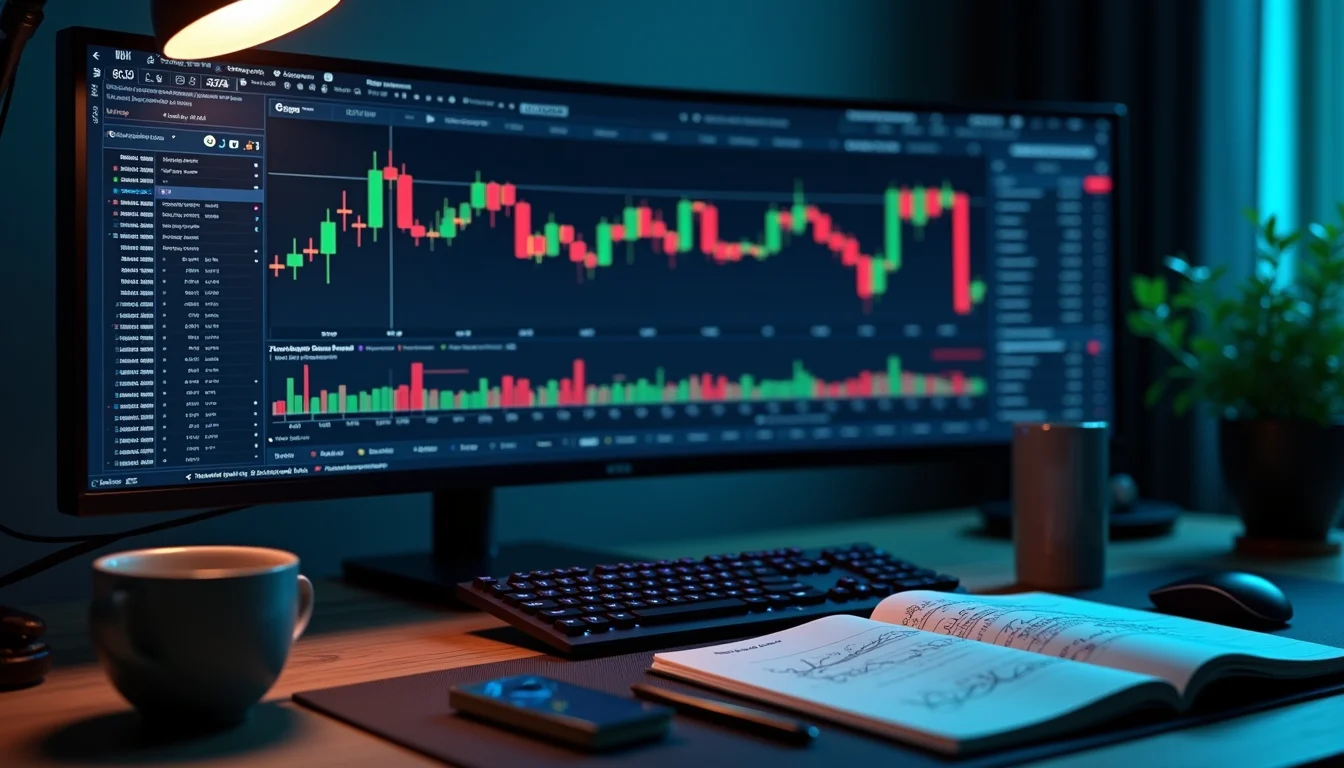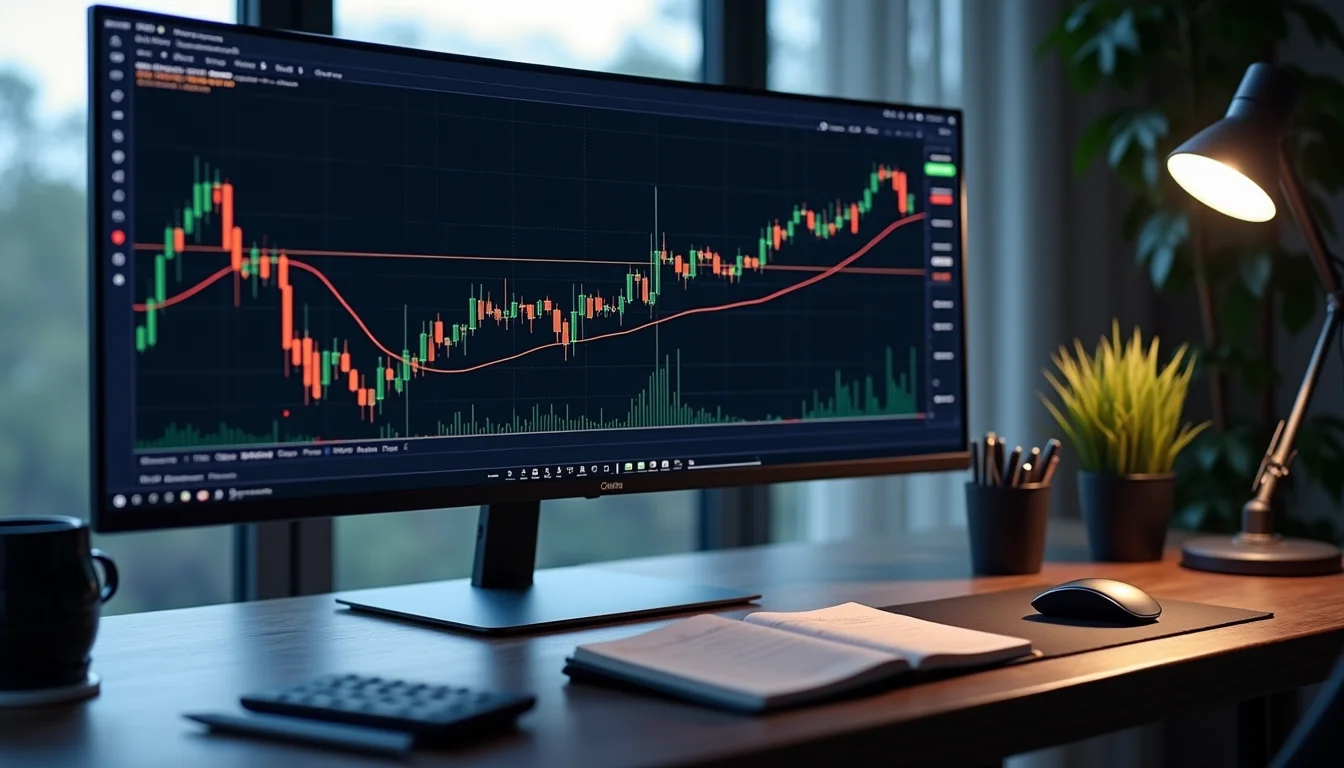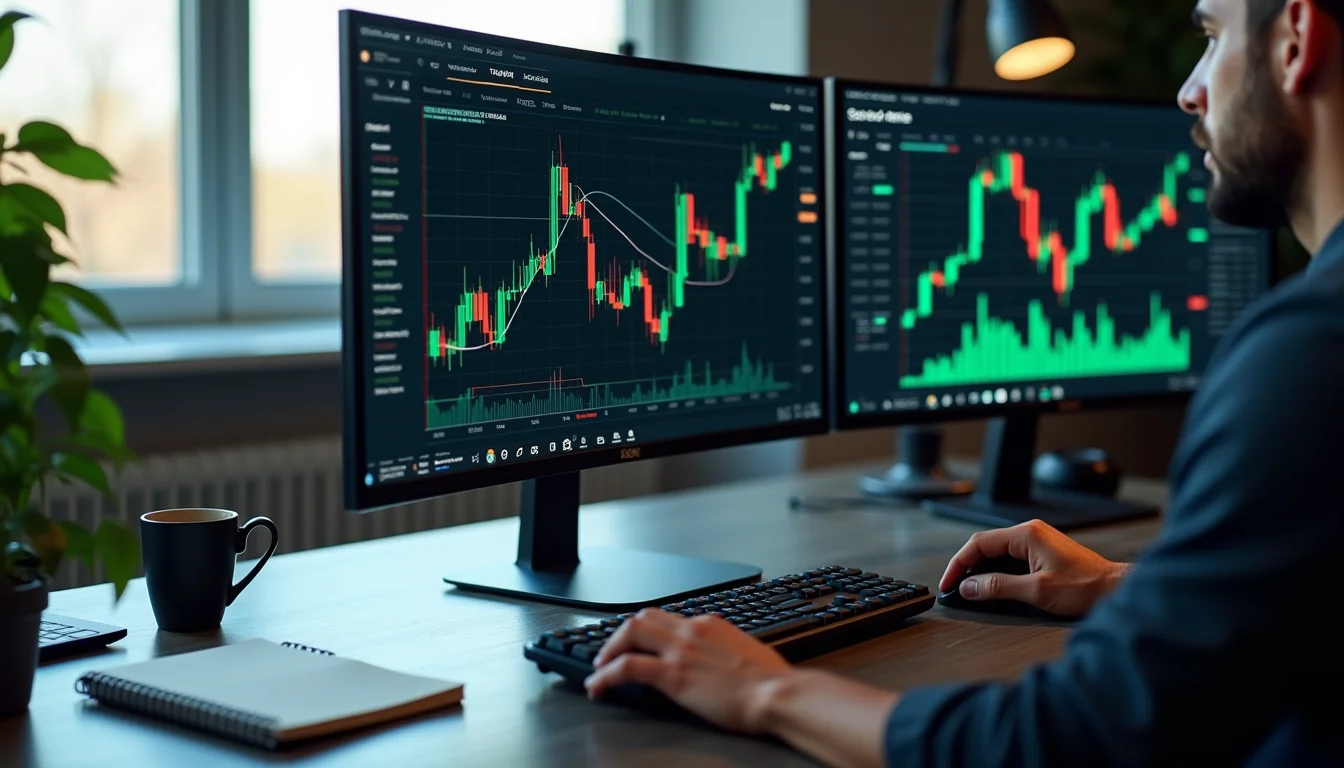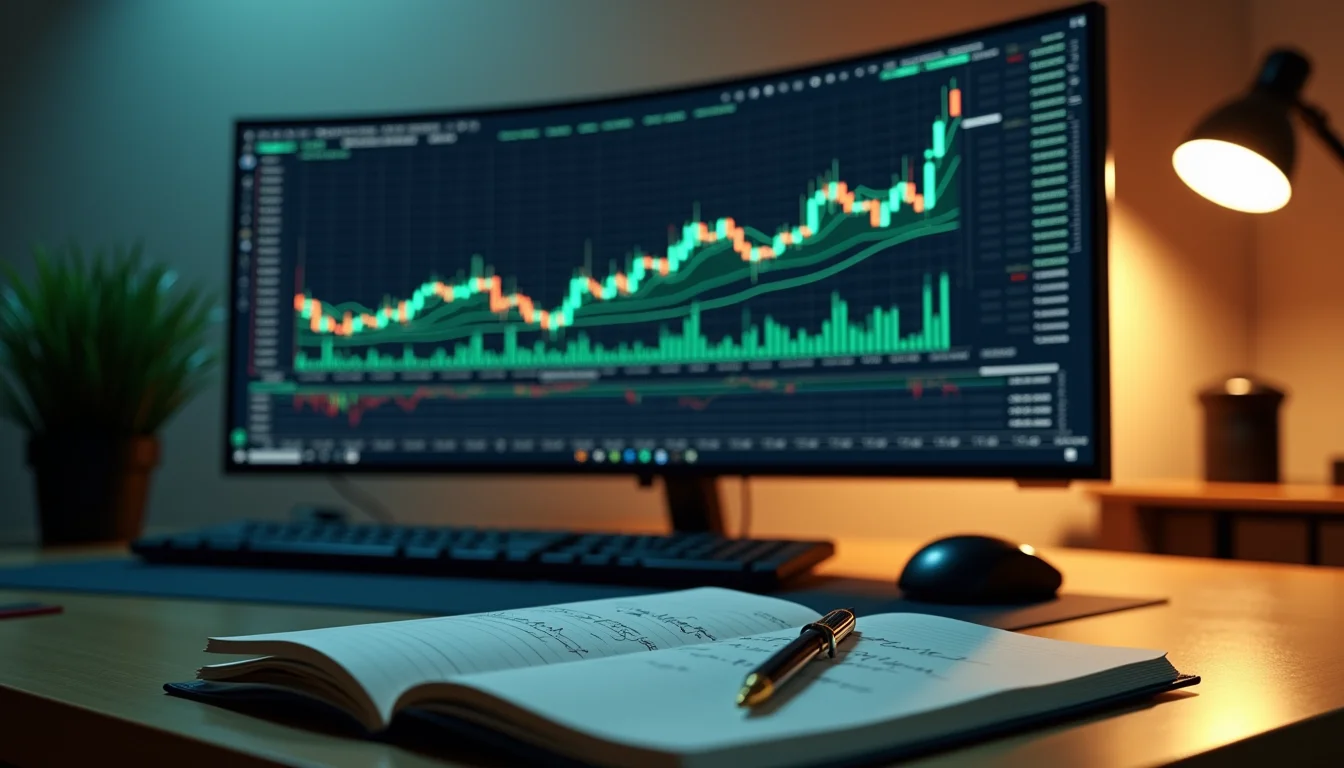Introduction
Remember that feeling when you placed your first trade? Your heart racing as you watched the charts, unsure whether you'd made the right decision. I certainly do. Back in 2015, I entered my first EUR/USD position with no real plan, just a hunch based on some news I'd read. The trade went against me almost immediately, and I watched helplessly as my account bled 15% in under two hours. That painful lesson taught me what separates successful traders from the rest: having a solid trading strategy guide to follow.
Over the years, I've developed and tested hundreds of approaches, from simple moving average crossovers to complex multi-timeframe systems. What I've learned is that while there's no single perfect strategy, there are fundamental principles that every trader needs to master. This comprehensive trading strategy guide will walk you through exactly what I wish someone had taught me when I started.
You'll discover how to build a strategy that fits your personality, manage risk effectively, and develop the discipline needed for long-term success. Whether you're trading stocks, forex, or cryptocurrencies, the principles in this guide apply across all markets.
Understanding Trading Strategy Fundamentals
Before we dive into specific approaches, let's establish what makes a trading strategy actually work in real market conditions.
What Exactly is a Trading Strategy?
A trading strategy isn't just a set of rules for entering trades—it's your complete business plan for navigating the markets. Think of it as your personal trading constitution. It should answer every possible question you might face: When do I enter? How much do I risk? Where's my profit target? When do I cut losses?
I've seen too many traders jump between strategies every time they have a losing streak. They'll use a trend-following approach for two weeks, switch to mean reversion after three losses, then try breakout trading when they get frustrated. This strategy hopping is a surefire way to blow up your account. The key is finding an approach that aligns with your personality and sticking with it long enough to master it.
The Three Pillars of Any Successful Strategy
Every profitable trading strategy rests on three non-negotiable components:
- Edge: A statistical advantage that makes you money over many trades
- Risk Management: Rules that protect your capital during losing periods
- Psychology: The discipline to execute your plan consistently
Most beginners focus entirely on finding an edge while ignoring the other two pillars. I made this exact mistake early in my career. I spent months developing what I thought was a bulletproof entry system, only to discover that I lacked the emotional control to follow it during drawdowns. Your strategy is only as strong as your weakest pillar.
Developing Your Market Analysis Framework
Analysis forms the foundation of every trading decision. Let's break down the three primary approaches and how they work together.
Technical Analysis: Reading the Charts
Technical analysis involves studying price action and volume to predict future movements. When I first started, I overwhelmed myself with dozens of indicators—RSI, MACD, Bollinger Bands, Stochastic, you name it. My charts looked like a rainbow explosion.
What I've learned through experience is that simplicity wins. Now I primarily use:
- Price action and key support/resistance levels
- Volume profile for significant levels
- One or two momentum indicators at most
For example, when using our TradeMaster Pro Strategy, I focus on clean price action around established levels rather than getting bogged down in indicator overload.
Fundamental Analysis: Understanding the Why
While technicals tell you when to trade, fundamentals tell you why prices move. I learned this the hard way in 2016 during the Brexit vote. My technical analysis showed a clear range-bound market, but I ignored the fundamental catalyst. When the vote results hit, GBP/USD dropped 1,800 pips in minutes.
For stock traders, fundamentals mean earnings reports, revenue growth, and industry trends. For forex traders, it's interest rate decisions and economic data. Crypto traders need to understand network activity and adoption metrics. The key is knowing which fundamentals matter for your specific market.
Sentiment Analysis: Gauging Market Mood
Market sentiment measures whether traders are predominantly bullish or bearish. This becomes particularly valuable at extremes. I remember in late 2017 when Bitcoin sentiment reached euphoric levels—everyone was buying, and fear of missing out dominated decision-making. That was actually the perfect contrarian signal to take profits.
You can track sentiment through tools like the TradingView community tab, put/call ratios, or dedicated sentiment indicators. When everyone leans one direction, the market often moves the opposite way.
Essential Risk Management Principles
Risk management separates professional traders from gamblers. Here's what actually works in live trading.
Position Sizing: The Math of Survival
Your position size determines how much you risk on each trade. The golden rule I follow: never risk more than 1-2% of your account on a single trade. This isn't just a suggestion—it's mathematical survival.
Let me show you why this matters. If you risk 5% per trade and hit a losing streak (which every trader experiences), just six consecutive losses would wipe out 26% of your account. At 2% risk, that same losing streak costs you only 11%. The difference between recovering from a 26% drawdown versus 11% is massive psychologically and mathematically.
Stop-Loss Strategies That Actually Work
Placing stops is both an art and science. The most common mistake I see is placing stops too tight, getting stopped out, then watching the trade move in their original direction.
Instead, I place stops based on market structure rather than arbitrary percentages. If I'm buying a pullback to support, my stop goes below the recent swing low. If the market takes that level out, my thesis was wrong anyway. This approach typically results in 1-2% risk per trade on most timeframes.
Building Your Entry and Exit Framework
Knowing when to enter and exit separates consistent traders from the rest.
High-Probability Entry Triggers
An entry trigger is your specific signal to enter a trade. It should be unambiguous and repeatable. Here are three setups I've used successfully for years:
- Breakout Retest: Price breaks a key level, pulls back to test it as support/resistance, then continues in the breakout direction
- Trend Pullback: In an established trend, wait for price to pull back to a moving average or trendline before entering
- Support/Resistance Bounce: Price approaches a clear support/resistance level with confirming momentum divergence
For instance, last month I caught a beautiful EUR/GBP short using the breakout retest method. Price broke below 0.8550 support, retested it over two days, then dropped another 120 pips. The key was waiting for the retest confirmation rather than chasing the initial break.
Exit Strategies: Taking Profits Systematically
Exits are where most traders struggle. The temptation to take quick profits or let losses run is powerful. That's why I use predetermined exit rules for every trade.
My preferred approach is scaling out—taking partial profits at predetermined targets while letting a portion run. For example, I might take 50% off at 1:1 risk-reward, another 25% at 2:1, and let the final 25% run with a trailing stop. This approach locks in profits while still allowing for home runs.
Backtesting and Strategy Validation
Never trade a strategy you haven't thoroughly tested. Backtesting saves you from learning expensive lessons with real money.
Manual Backtesting: Developing Market Intuition
While automated backtesting has its place, I always start with manual testing. Going through charts bar by bar helps develop pattern recognition that computers miss.
Here's my process: I'll take a specific setup—say, a moving average crossover on the 4-hour chart—and manually track how it would have performed over the last 200 instances. I record entry price, exit price, profit/loss, and any observations about market conditions. This process typically takes 10-15 hours but provides invaluable insights.
Forward Testing: Proving Your Strategy Live
After backtesting, I forward test every strategy with small position sizes before committing serious capital. This is where you discover whether you can actually execute the strategy in real-time with money on the line.
I recommend a minimum of 50-100 trades in forward testing before deciding if a strategy works for you. Track every trade in a journal, noting your emotional state and any deviations from your plan. This data becomes gold when refining your approach.
Psychology and Discipline in Trading
The mental game is where most strategies succeed or fail.
Managing Emotions During Drawdowns
Every strategy has losing periods—it's mathematical certainty. How you handle these drawdowns determines your long-term success.
When I hit a losing streak (and I still do), I focus on execution quality rather than outcomes. Did I follow my rules? Was my analysis sound? If yes, then the losses are just statistical noise. This mindset shift took me years to develop but made me consistently profitable.
Building Consistent Trading Habits
Successful trading comes down to habits. My morning routine includes reviewing economic calendars, scanning for overnight developments, and planning potential trades. This preparation puts me in the right mindset before markets open.
I also have specific rules for when to stop trading: after three consecutive losses, if I'm feeling tired or emotional, or if market conditions clearly don't suit my strategy. Knowing when not to trade is as important as knowing when to trade.
Advanced Trading Strategy Techniques
Once you've mastered the basics, these advanced techniques can help refine your edge.
One technique I've found incredibly valuable is multiple timeframe analysis. Rather than trading from a single chart, I analyze three timeframes: one higher for context, my trading timeframe, and one lower for precise entries. For example, when day trading, I might use the 4-hour chart for direction, the 1-hour for setup identification, and the 15-minute for exact entries.
Another advanced concept is strategy diversification. Just like you diversify investments, consider diversifying trading strategies. I typically run two non-correlated strategies simultaneously—one trend-following, one mean-reversion. This smooths out equity curves since different approaches work in different market conditions.
Seasoned traders also pay close attention to market context. Is volatility expanding or contracting? Are we in a trending or ranging environment? I adjust position sizes and profit targets based on current market character. During high volatility periods, I might widen stops and targets while reducing position size to maintain consistent risk.
One pitfall even experienced traders face is over-optimization. I learned this lesson building custom indicators with Pine Script documentation. When you curve-fit a strategy to past data, it often fails spectacularly in live markets. The solution is keeping strategies robust rather than perfect.
Putting It All Together
Building a successful trading career isn't about finding a secret indicator or magical system. It's about developing a comprehensive approach that fits your personality, risk tolerance, and lifestyle.
The trading strategy guide framework we've covered gives you the foundation to build something lasting. Start with one approach, master it through rigorous testing, then focus on execution and psychology. Remember that consistency beats brilliance in trading—small edges compounded over time create significant wealth.
If you're looking for proven strategies to accelerate your learning curve, check out our TradeMaster Pro Strategy which incorporates many of the principles we've discussed. For more educational content, our blog post on finding the best trading strategy dives deeper into strategy selection.
Ultimately, the market will teach you lessons—some gentle, some brutal. Having a solid trading strategy guide to follow ensures you learn from these lessons rather than repeating them. What's the first element of your strategy you'll develop or improve after reading this?
Frequently Asked Questions
How long does it take to develop a profitable trading strategy?
Most traders need 6-12 months of consistent work to develop something reliably profitable. The key isn't just creating the strategy but internalizing it through practice until execution becomes second nature. I spent my first eight months testing different approaches before settling on what worked for me.
What's the most common mistake beginners make with trading strategies?
Strategy hopping is the biggest killer of beginner accounts. They'll try something for a week, have a few losses, then jump to the next shiny approach. Pick one reasonable strategy, test it thoroughly, and give it enough time to work through normal drawdown periods.
How much capital do I need to start testing a trading strategy?
For forward testing, you can start with as little as $500-1000 using micro lots in forex or fractional shares in stocks. The amount should be enough that the profits and losses matter psychologically but not so much that a string of losses would impact your finances.
Should I use a ready-made strategy or develop my own?
There's value in both approaches. Starting with a proven strategy like our TradeMaster Pro Strategy gives you a solid foundation, but you'll likely need to customize it to fit your personality. The best strategies eventually become personal—adjusted based on your unique experiences and risk tolerance.
How do I know when to abandon a trading strategy?
Abandon a strategy only after thorough testing shows it's fundamentally flawed, not because of normal drawdowns. If after 100+ trades your edge has disappeared across different market conditions, it might be time to move on. But first, check if the issue is execution rather than the strategy itself.



